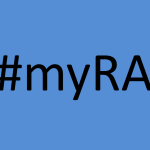The federal government – following an idea proposed during Obama’s January 2014 State of the Union address – will role out a new simplified IRA plan later this year, designed as a starter retirement account, known by the catchy name MyRA.
Geared to lower- and middle-income earners, the accounts will have the following features:
1. Automatic deduction of contributions from payroll (that’s a good thing).
2. Same income limits, contribution limits and tax treatment as the Roth IRA – post-tax contribution, $5,500 total per year, $129,000 income per individual (that’s fine).
3. A maximum size of $15,000 total before investors need to roll it over to a private IRA (that seems arbitrary).
4. A single investment option, in a variable-rate “G Fund,” that matches the Thrift Savings Plan Government Securities Investment Fund. (that’s a terrible idea).
Why that’s a terrible idea
I understand the federal government designed the MyRA to solve a set of identified problems, explained in this White House Press Office blog post.
First, one half of all Americans have zero retirement savings.
Second, half of all full-time workers have no access to an employer-sponsored retirement plan (like a 401K or 403b), and that number climbs to 75% for part-time workers.
Third, lots of people who had retirement accounts invested in public markets lost money in the last financial crisis.
These are all admirable problems to tackle, although the existing IRA accounts are already available to anyone not covered by an employer’s plan.
Will the MyRA actually force small business owners to enroll employees?
The most interesting innovation appears to be the automatic enrollment by employers and automatic deduction of employee paychecks feature of MyRAs, although I can already hear the cries of “Nanny State” and “Government Don’t Tell Me How To Run My Small Business Or How To Save Money.”

I cannot tell from the White House memo how coercive the MyRA enrollment will be. Does every small business have to enroll their employees if they don’t offer a retirement account? I just can’t believe the current Congress would pass anything that resembles coercion against small businesses. So my guess is that this MyRA becomes an optional program, and this most innovative part of the MyRA program disappears.
What remains after Congress eliminates automatic enrollment, however, is a disservice to lower- and middle- income employees.
Without automatic enrollment, the MyRA seems to address the first two problems – zero savings and zero employer-sponsored retirement plans – by creating an account with tremendously similar features as the existing Roth IRA plans, but with one terrible feature.
The terrible feature
Your only option is to invest in US government debt.
The interest rate will vary over time according to prevailing interest rates, but, by design, this will be most secure dollar-denominated investment available, and therefore the lowest yielding.
The current 1 year rate offered by the “G Fund” is 1.89%. After inflation, the return on your money in a MyRA is close to zero.
Although the G Fund rate – and therefore your expected return – will go up or down with changing interest rates over time, the way the income yield on US government debt works is that it will only ever barely exceed the rate of inflation over time, almost by definition, as a result of market forces.
The fact that your income will be available upon retirement ‘tax-free’ like a Roth IRA is close to meaningless, since there will be hardly any income to enjoy, tax-free.
This is unacceptable as a product for retirement savings, and unacceptable to market as a vehicle for lower- and middle-income employees, who badly need the benefit of higher compound returns, even more than other retirees.
The memo describing the MyRA boasts that MyRA investors may rest assured that they cannot lose their principal. They can be confident that their retirement savings will not be subject to the kind of volatility that we’ve seen in recent years.
What the memo does not spell out, but that make the MyRA troubling, are the following key ideas about retirement investing:
1. Over longer time horizons – say between 5 years (70% of the time) to 15 years (95% of the time) to 20 years (99.5% of the time) – stocks win. The volatility of the stock market ceases to be a risk when compared to investing in bonds. This is because despite the volatility of stocks in the short run, stocks always offer a superior return in the long run. Retirement savings – the most long-run investing that individuals do – must skew toward higher-risk, higher-return products like stocks, and away from bonds [For more on this idea, see this post on “100% equities for the long run.”]
2. The long-run risk of investing in bonds in a retirement account is the terrible loss of purchasing power due to inflation, as well as the missed opportunity of long-term wealth accumulation from higher-risk, higher return investments.
In sum, if the MyRA only lets investors earn the “G Fund” rate of return, it’s totally unsuited for anybody’s retirement account.
An even more cynical view
Now let’s apply a paranoid Wall Street skeptic’s eye for a moment.
I do not believe the Obama administration has an evil master plan here.
They are not proposing to automatically deduct a portion of salaries from poorly paid, unsophisticated folks with no other retirement money and thereby extract the limited savings of the country’s underclass to fund the nation’s debt, at a good-for-the-government-but-bad-for-the-poor long-term interest rate. I don’t believe that comes from a Dr. Evil plot deep inside the Treasury Department.
On the other hand, that would be the actual result of this MyRA plan.
One man’s investment is another man’s debt
What is obvious to Wall Street folks but less obvious to Main Street folks is that the bonds we buy for investment are the borrowing mechanism of the companies and governments who issue bonds. My bond investment = the (company/government) bond issuer’s borrowing.
When I earn a 3% return on a Coca Cola bond over ten years, that just means Coca Cola borrowed money from me at a 3% interest rate for ten years. When you buy a municipal water company bond at 4%, that just means the municipal water company took out a loan at 4% from lenders.
When the US Government offers a 1.89% “G Fund” return to lower-income workers in a MyRA, that also means the US Government borrows money from its lower-income workers at 1.89%. Which, while not intended as such, creates an evil result.

While it’s not an evil plot, it is a terrible plan.
To encourage lower-income (and presumably less-sophisticated) workers to earn a paltry 1.89% return on their longest-term investment is unconscionable retirement planning for the nation’s poorest, that just happens to, simultaneously, fund US government debt at a cheap interest rate.
Please see related posts on the IRA account investing:
IRAs don’t matter to high income people
A rebuttal: The curious case of Mitt Romney
The magical Roth IRA and inter-generational wealth transfer
The 2012 IRA Contribution Infographic
Post read (9827) times.

